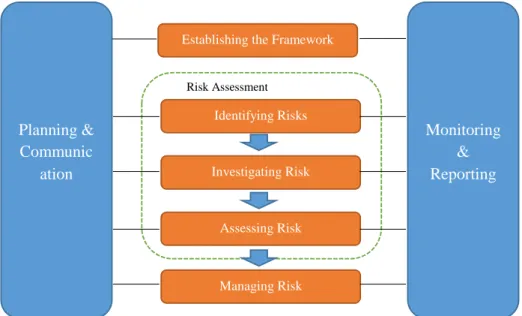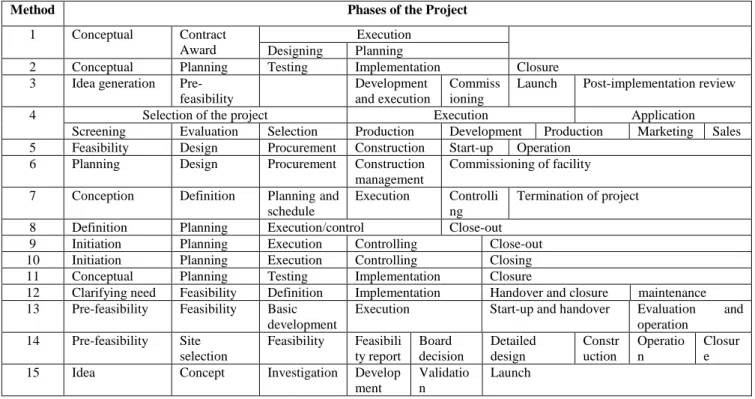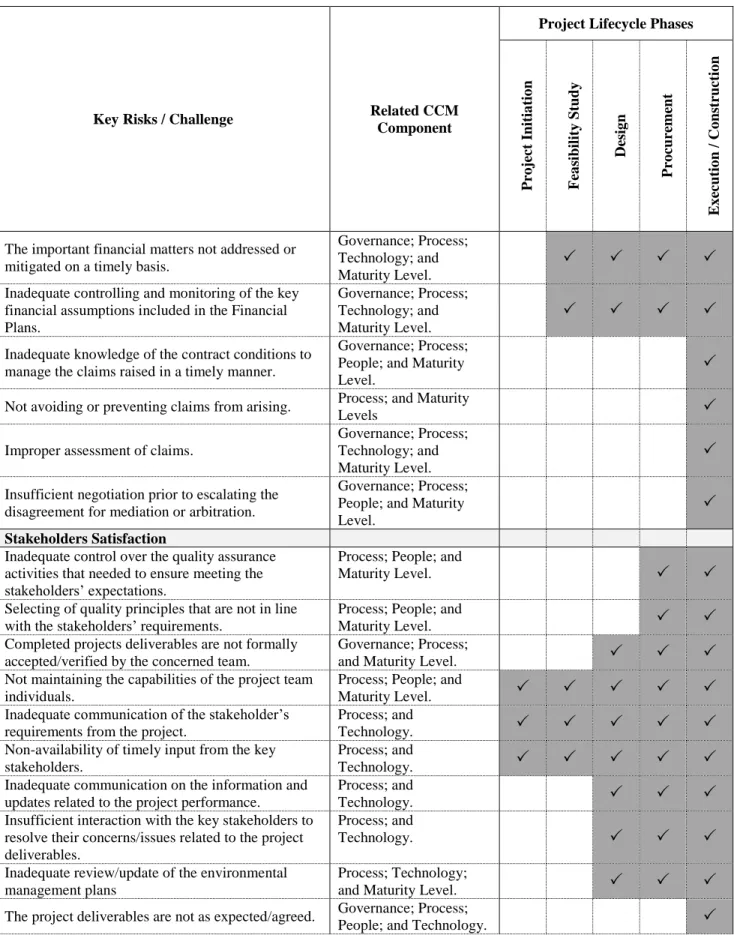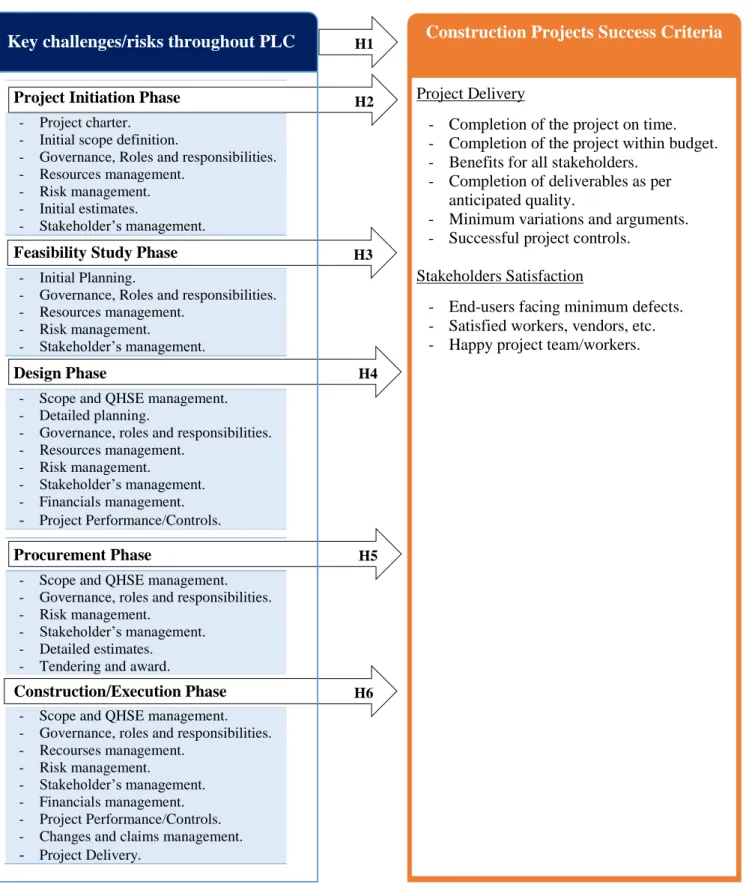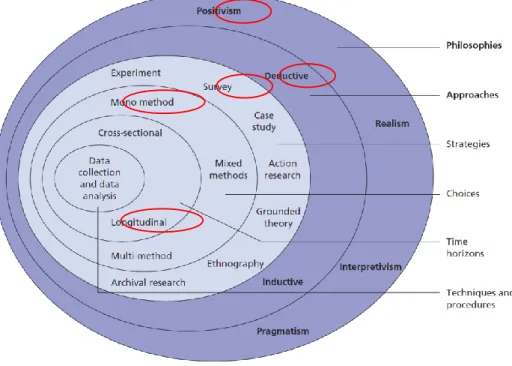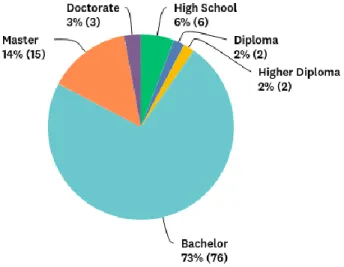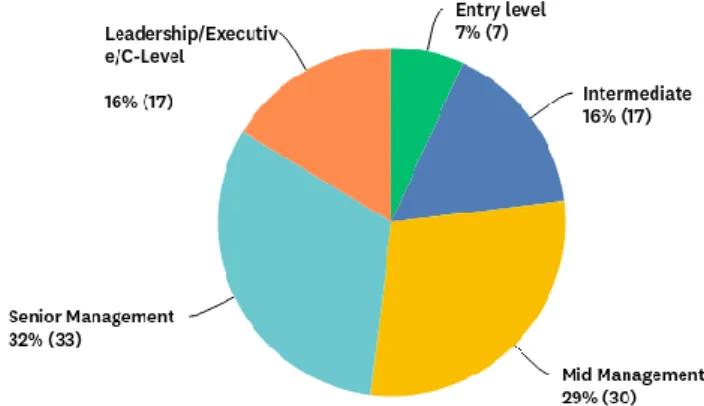The objectives include literature review of RM, PLC, risks associated with each phase, success criteria for the projects. This chapter discusses the background and significance of the problem statement, the ultimate purpose of the research and the identified objectives of the study.
Background and Statement of the Problem
Several research studies have addressed project risk management practices and project life cycle phases from a project management perspective. However, since risk management is part of the project management framework and project life cycle processes, risk management should not be viewed as a one-off process that is separate from other aspects of project management throughout the project life cycle.
Research Aims
Objectives
However, since risk management is part of the project management framework and project life cycle processes, risk management should not be seen as a single individual process, which is separated from other aspects of project management through project life cycle. life cycle, project success criteria and risks associated with each phase of the project life cycle.
Scope of the Research
Research Questions
Research Structure
Risk Management
- History of Risk Management
- Enterprise Risk Management
- Capability Maturity Model (CMM)
- Projects Risk Management
- Project Phase Risk Management
Minimizing the risk management budget by sharing risk knowledge and incorporating current risk management roles. Project risk management must be an essential part of project management and a central element of many decisions made in the project.
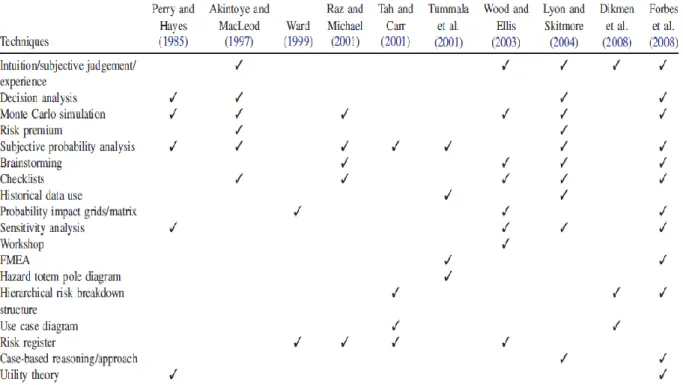
Projects Management
Projects Lifecycle Phases
There are many methods and approaches to managing projects throughout their life cycle with different views on the project life cycle in terms of the number and nature of phases/phases (which vary based on the culture of the organization, the nature of the business, policies and approved procedures, etc. .). (Aouad et al identified sixteen different views used to divide the project phases to determine the adequacy and success of the internal controls and systems needed to ensure the correctness and efficiency associated with the processes of initiation, planning, execution, control and closure (as detailed in table 2.3).
Project Success Factors
Screening Evaluation Selection Production Development Production Marketing Sales 5 Feasibility Design Purchase Construction Startup Operation.
Case Study
Case Study Background
Implemented Project Phases: A Literature Review
Projects must be included in the strategic plan to proceed to the project initiation phase. As the project design becomes clearer and nears completion, mitigating contingencies becomes more expensive. The risk assessment must thus be carried out in a timely manner throughout the project design phase.
A project owner may decide to nominate one or all of the project functions (building, design, construction supervision, etc.). The construction/execution phase is the time where the project management team puts their plans into action. It is relevant to note that most of the project's activities regarding numbers and costs are undertaken during this phase.

Key Risks throughout the Project Lifecycle
Inaccurate assessment of the project risks based on the current risk score derived from the risk impact on the project. Inability to complete the contract, including resolution of claims, testing, commissioning, takeover of works, closure of the project/stage. Insufficient study of the environmental impact in the vicinity of the project area/location and the environmental principles related to the project.
After identifying common risks in construction projects, the risks are classified based on applicability to each phase of the project life cycle and related CCM components. Inaccurate assessment of project risks based on actual risk score derived from risk impact on project objectives and likelihood of occurrence. Insufficient interaction with key stakeholders to resolve their concerns/issues regarding project deliverables.
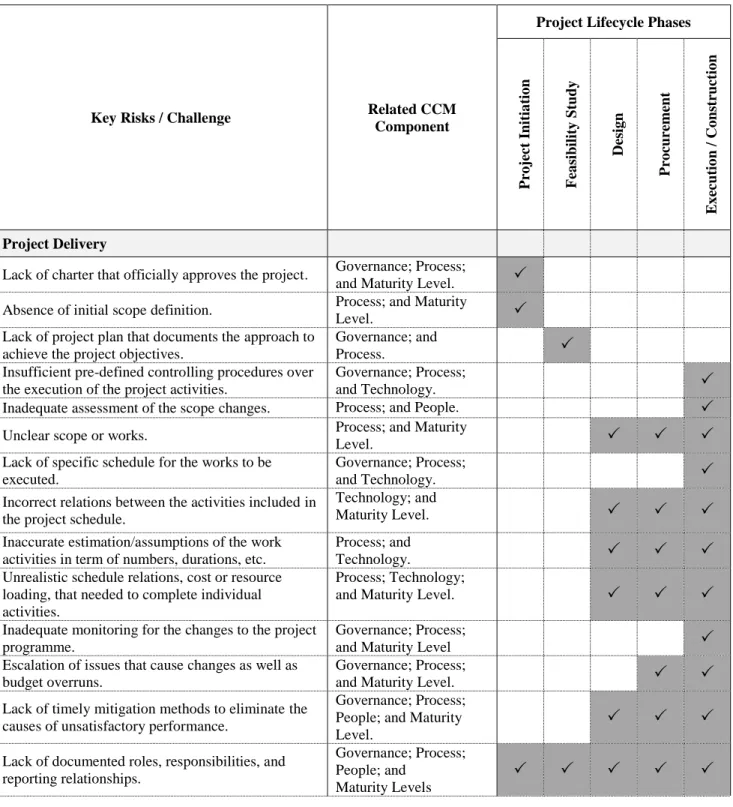
Research Methodology
The research contained two main parts; the first part involved collecting general information about the respondents to understand their suitability for the topic, including the respondent's professional background, level of education, number of years of experience in the respective industry, etc. The second part focused on obtaining the information/data related to the identified parameters in the survey based on the Likert scale. The first five scales obtain information on the independent variables (the main risks affecting construction projects in the UAE during the identified lifecycle stages of Project Initiation, Feasibility/Concept Study, Design, Procurement and Execution/Construction), while the last scale obtains information on the dependent variable for the key success factors for the construction initiatives in the UAE.
The obtained information examined the relationship between these aspects and their variables, and it should be noted that in order to ensure the most useful outcome of the research, the survey was mainly aimed at experts in the field of construction management, real estate, project management, individuals for the supervision of construction sites, etc. Respondents were asked to contribute to this online questionnaire and were selected based on their background and/or professional experience in relevant construction or other related fields. The survey was prepared in the form of an online questionnaire sent by e-mail with links to a self-selected sample.
Research Limitations
General Information - Statistics
Reliability
Correlation
Regression
Accordingly, a linear regression test was conducted between global DVs and each group of IV factors such as risks associated with life cycle phases such as inception phase, design phase, planning phase, procurement phase and implementation/construction phase, which is found the following ANOVA F values: 19.482 (inception phase), 35.737 (concept phase), 25.307 (planning phase), 26.144 (procurement phase) and 37.224 (implementation/construction phase) p < .000. The R Square and Adjusted R Square values indicate that the difference in turnover intention could be acceptable in terms of perceptions of organizational justice – as shown in Tables and 5.8 below.
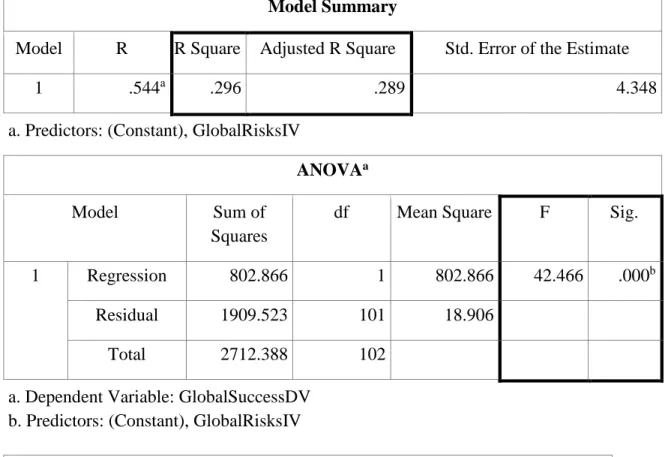
Ranking of Risks (at each stage)/Success Factors
This section discusses and analyzes respondents' feedback on the importance of key risks at each stage of the project for the risks moving from one stage to the next. In addition, the results established for the mentioned hypotheses and the control assessment that can be useful to assess the controls related to each stage of the project lifecycle will be discussed.

Key Risks Moving from One Phase to Another
The risks related to the project scope and QHSE requirements are critical, it is reflected heavily in most phases of the project, including the initial definition of the scope in the project initiation phase, and the management and control of the scope and the requirements of the project. QHSE in the design, procurement and execution phases. Risks associated with governance, roles and responsibilities are shifted across the phases of the project life cycle. Stakeholder management risks are also reflected in all phases of the project at different levels of importance with high importance in the feasibility phase as well as in the design and procurement phases (Mishmish & El-Sayegh 2016).
The risks of resource management also shift from one phase to another, which includes managing the human resources/project team and managing the resources charged to the project activities. In addition to the above, there are various risks that particularly relate to planning, procurement and project delivery; these risks are relevant to achieving the project objectives within the key constraints of budget, time and quality. However, these risks may only be significant within the limited (one or two) phases of the project without moving through most of the phases as in the above.
Hypotheses
The initiation phase is the right time to identify challenges that may affect the project. Take the opportunity to bring the project team and stakeholders together, review governance requirements, roles and responsibilities related to key issues, including securing the project budget, agreeing on the appropriate contingency percentage; it is essential to agree with the project stakeholders on an adequate percentage of contingencies to set aside to deal with any unforeseen issues that arise during the project life cycle. Moreover, appointing the right project manager, establishing the Steering Committee is a key success in achieving the project objectives.
H3: The correlation between the management of concept phase risk management and the success of construction projects in the United Arab Emirates is high. 2013) identified that managing the risks associated with the project study/conceptualization phase makes a crucial contribution to the success of the project. Ghoddousi and Hosseini (2012) identified that A Design Development Brief is the first stage of the project design process. H5: The correlation between the management of risk management in the procurement phase and the success of construction projects in the United Arab Emirates is high. 2013), one of the essential activities carried out by the project team in the project life cycle phases is the procurement activities.
Control Assessment Method
Is the same functional group (department) responsible for both contract formation and contract administration for projects. Are the assets and/or the projects in progress sufficiently insured and is the insurance coverage reviewed periodically? What is the disposition of bids and evaluation spreadsheets after they are no longer needed for the evaluation.
Are management-directed changes quickly identified and notification of the impact given to management. Are the cost and schedule impact of each change carefully documented, reviewed and evaluated by management. Is authorization or issuance of change orders selectively controlled, i.e. are different levels within the management organization authorized to approve change orders.
What is the disposition of contract files/records once the contract is completed and final payment is made.
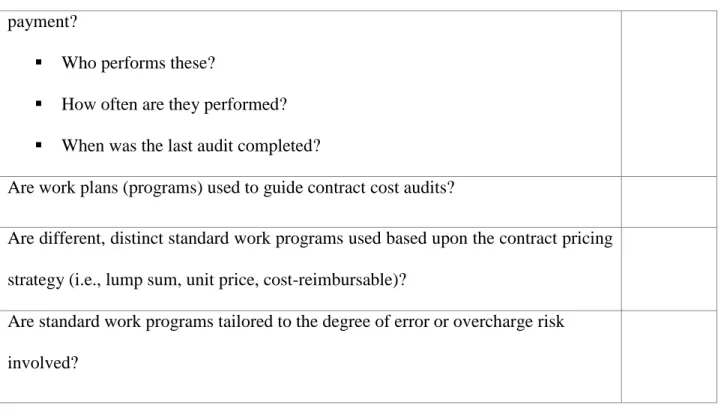
Conclusion
H1: The relationship between risk management across project life cycle stages and the success of construction projects in the United Arab Emirates is high. H2: The relationship between early stage risk management and the success of construction projects in the United Arab Emirates is high. H3: The relationship between concept stage risk management and the success of construction projects in the UAE is high.
H4: The correlation between the management of risk management in the design phase and the success of construction projects in the UAE is high. H5: The correlation between the management of risk management in the procurement phase and the success of construction projects in the UAE is high. H6: The correlation between the management of risk management in the execution/construction phase and the success of construction projects in the UAE is high.
Recommendation
Objective #4: A set of recommendations to the construction practitioners (within the UAE construction sector) to assess the internal control effectiveness related to projects. This will help in evaluating how the company management is currently functioning and areas for improvement. Delays - Major construction projects are taking years longer than they're supposed to - and the public wants to know why.
Research on the relationship between risk management (throughout the project life cycle) and the success of construction projects in the UAE. Assess the risks affecting the success of the project in the UAE (at each stage).
